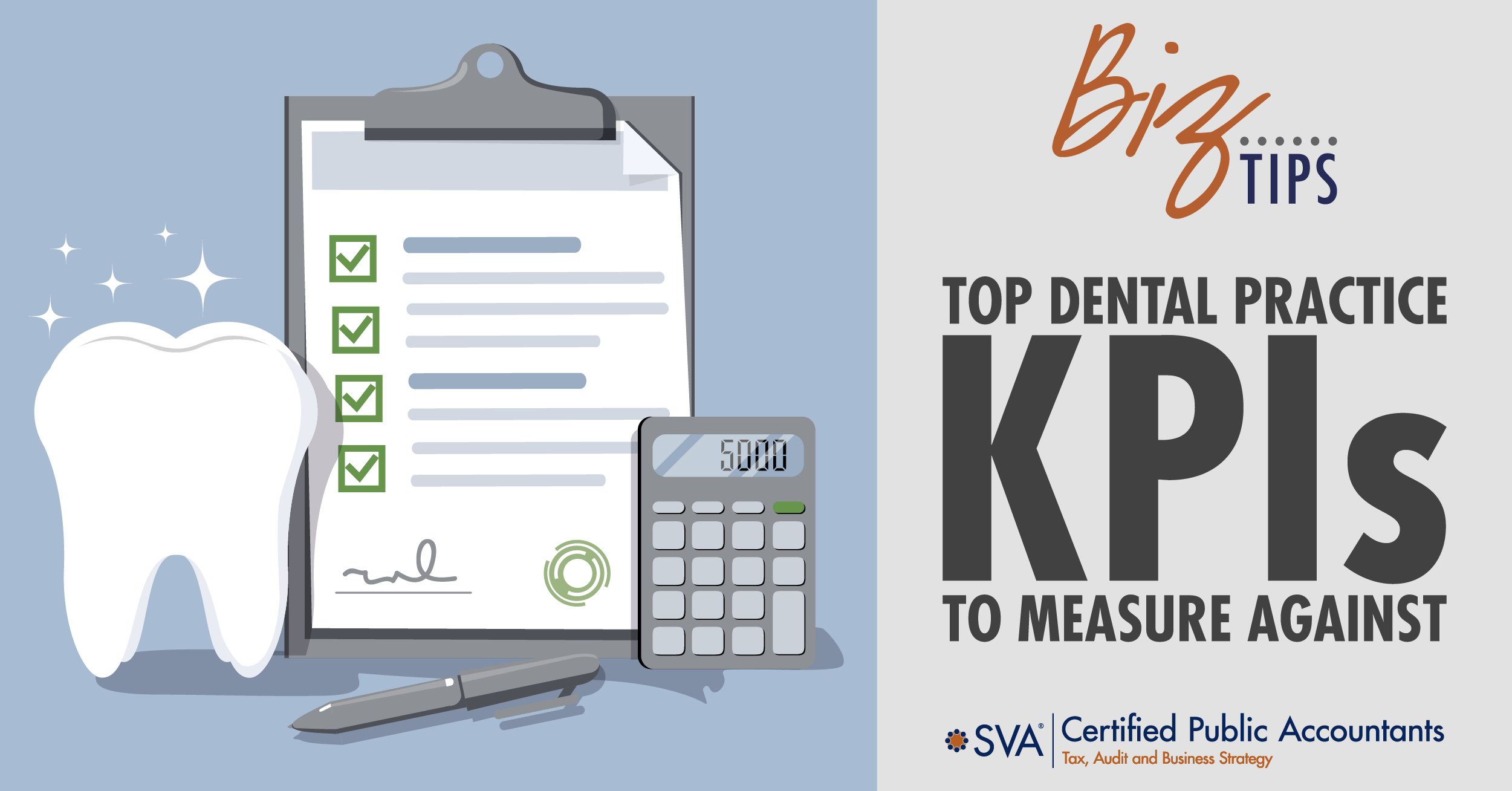There are many ways you can disseminate your dental practice information to give you an idea of how you’re performing, but what are the key financial performance indicators (KPIs)?
Dental Practice KPIs
Exact figures will vary based on practice size, location, and procedure mix, among other factors.
Overhead
The most important KPI in a dental practice is overhead cost and how you can manage it. A good goal to achieve is managing overhead to not exceed 60% of revenue.
It is essential your financial statements are formatted in a way that can quickly provide this information so you can make informed decisions.
Show Your Expenses as a Percentage of Revenue
This percentage will tell you how much of every dollar you bring into the practice you are spending on a specific expense.
Create Meaningful Categories of Expenses
A best practice is to use at least four main categories of expenses that apply to all practices:
- Staff Expenses
- Supplies and Lab
- Occupancy
- General Overhead
Carve Out Your Total Overhead Expense
Make sure you present your total overhead so you can quickly identify what percentage of revenue is going to overhead expenses.
Collection Percentage
Collected receipts as a percentage of production, or “Collection Percentage,” is helpful to monitor collection periods and insurance reimbursements.
The amount of insurance reimbursement and fee discounts within your practice mix, as well as the procedure mix, will heavily influence this metric. Higher-value procedures will carry greater weight within this calculation.
Assuming you are a cash-basis taxpayer, if you can increase your collection percentage, this increase in reimbursement will fall right to the bottom line, and your practice will become more profitable.
However, the inverse is true if your collection percentage decreases, so it’s an extremely important KPI to monitor. As a general rule, aim for 70-80%.
Other KPIs to Consider
Hygiene Production Ratio
Measuring hygiene production as a multiple of hygiene wages is a helpful way to track both hygiene output and efficiency, as well as office scheduling practices. Ideally, hygiene production is 3.5x wages.
If you schedule 45- or 50-minute hygiene appointments, this ratio has the potential to trend toward 3.8x in top practices. Unfilled cancellations can wreak havoc on this crucial ratio, as can having longer than 60-minute routine appointments.
Dentist Production Ratio
Track dentist production as a multiple of hygiene production. Dentist production should be at least 2x hygiene production.
Accounts Receivable Aging
Monitor accounts receivable aging by tracking the number of months of production in accounts receivable. Accounts receivable can range from 25% to 75% of one month of office production.
For this indicator to be effective, it is important to have ‘clean’ accounts receivable records, meaning no large outstanding balances or credits.
When reviewing this information, it’s important to note that the KPIs will vary based on geographic location, patient mix, payer mix, and even specialty.
These are just a few KPIs you should track and monitor on a regular basis. Work with your accountant to use these metrics to improve practice profitability, become a more efficient practice, and help you achieve your goals.
© 2022 SVA Certified Public Accountants

